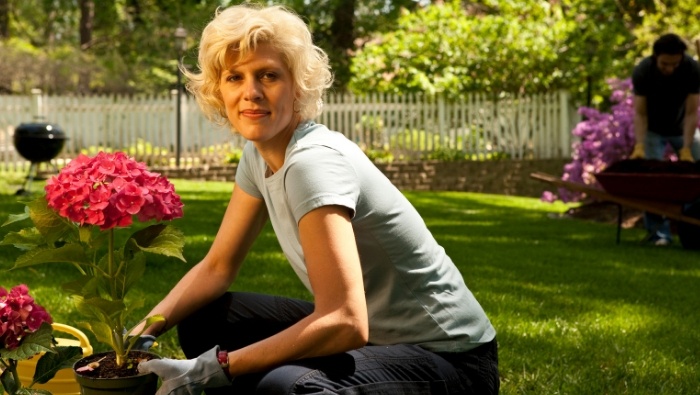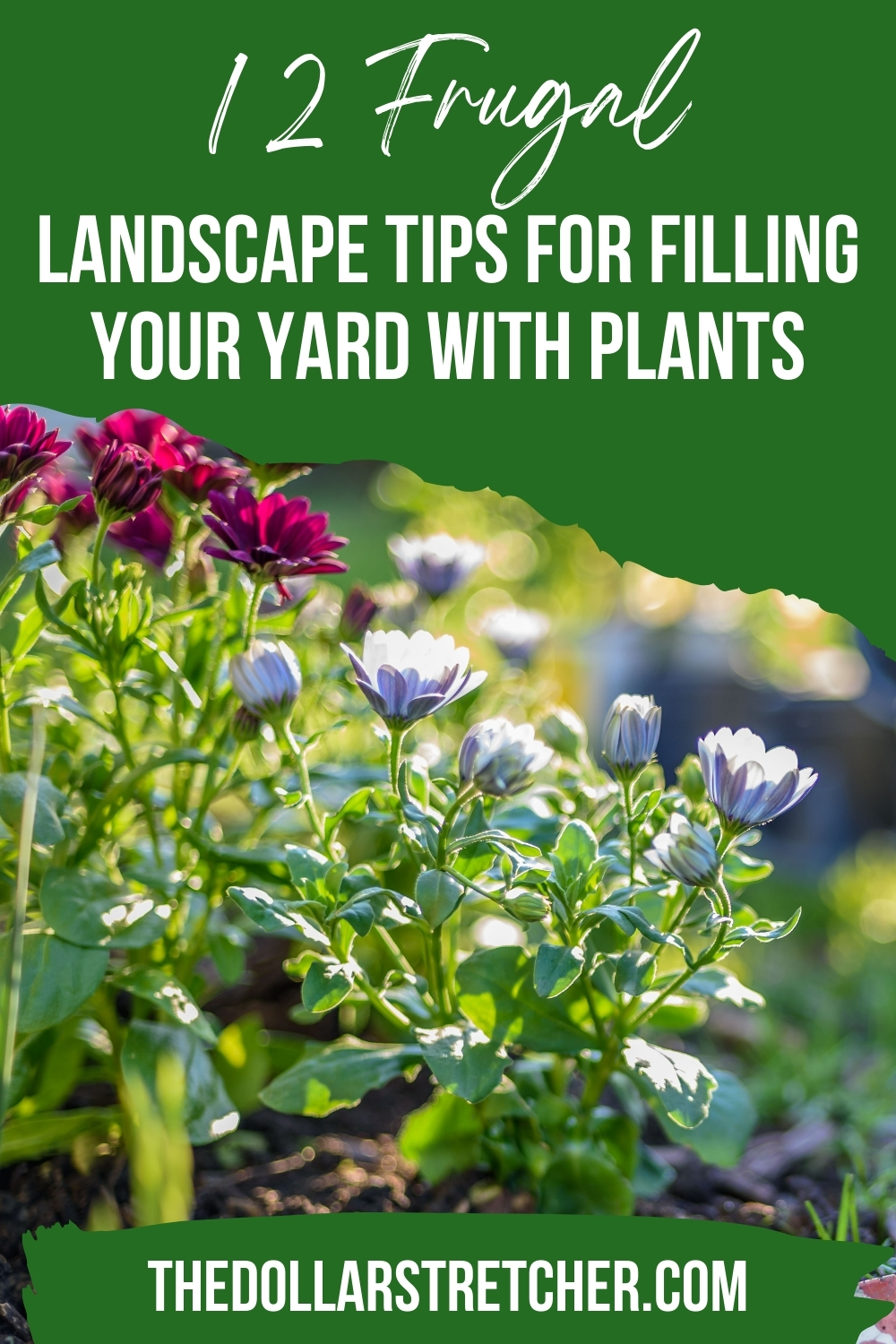12 Frugal Landscape Tips for Filling Your Yard With Plants
Buying enough plants to fill out your yard can get pricey. Get more for your landscape dollars using these frugal tips for finding plants, flowers, shrubs, and trees for less.

A gorgeous landscape is an essential feature of an attractive home.
It’s also one of the most expensive.
If your grounds are looking a little sparse, take heart. There are at least a dozen ways to fill out a property with more shrubs, flowers, and trees without investing vast amounts in the local nursery. Improving your home landscape by your own effort and wits can be considered sweat equity, but most methods for multiplying plants are quick and easy, as you will see with these frugal landscape tips for filling your yard with plants.
1. Gather seeds.
A couple of pods from marigolds, coreopsis, or morning glories (let them turn brown before you harvest) yield hundreds of potential blooms for next year.
Store them in envelopes or small jars and keep them in a cupboard that’s cool and dark.
2. Spread out creeping things like phlox or pachysandra.
Snip off a clump (make sure you get some roots) and start a new patch. Loosen the soil, cover the roots and give the beginners a drink during dry spells.
3. For the nearest thing to instant gratification, divide plants.
Hostas and bleeding hearts don’t miss a beat when you split them up.
Use a shovel to slice through the roots, dig a roomy hole, and settle in the piece you’ve separated. They’ll fill out fast.
4. Divvy up crowded bulbs.
After the tops have died, you can dig up a shovel full and thin out the bulbs. Take out lots; they won’t be missed.
Save them in a coffee can until the fall and plant them under trees or on a slope.
Sign Up for Savings
Subscribe to get money-saving content by email that can help you stretch your dollars further.
Twice each week, you'll receive articles and tips that can help you free up and keep more of your hard-earned money, even on the tightest of budgets.
We respect your privacy. Unsubscribe at any time.
5. Rescue the uprooted.
Keep a wooden box or unused planter full of rich soil as a temporary residence for bits and pieces of plants that get displaced during weeding or rearranging.
A strand of periwinkle or a couple of wayward chickens, patches of moss, or bits of ivy will strengthen their roots while biding their time for replanting.
6. If you or a friend have woods, dig up some frilly ferns for the shady side of the house.
Some specimens get waist high and can make a real impact along the foundation. They’ll spread, too.
7. Toddler trees spring up anywhere you’re not paying close attention.
Gently dislodge tiny maples or butternuts and give them a place to grow.
8. Root shoots.
Woody shrubs like Rose of Sharon are good candidates for propagating. You can get them started in a potting medium, but clippings can also be stood in a bucket or jar of water. It will take several weeks for roots to form, but you’ll have a whole row of new shrubs.
9. Buy plants with long-term benefits.
When you actually break down and buy plants, look for long-term benefits like things that spread out and cover a lot of ground.
Cotoneaster can go from gallon pot to six feet wide in just a few seasons. Pick perennials. Look for containers with more than one plant. Divide up a pot full of ornamental grass and start several plantings for one outlay of money.
10. Plants, like everything else, eventually go on sale.
Later in the season, hanging baskets, flats, pots, and bulbs may be drastically reduced. Root-bound plants won’t be as perky as they once were, but they’re just waiting for someone to give them a chance to stretch out and grow.
11. There’s hardly anything that can’t be bought at a yard sale.
That includes plants. Rummage sales often feature a plant table.
12. Share nicely.
Trade a clump of tiger lilies for a jar of snapdragon seeds.
Reviewed July 2024
Popular Articles
- 7 Habits of Highly Frugal People
- 5 Simple Budget Cuts That Can Save $200 a Month
- How to Track Down Unclaimed Funds Owed You
- 32 Ways to Save Money on Your Utility Bills
- Do You Need Credit Life Insurance When Buying a New Car?
- How to Maximize Profits When Selling Online
- Staying Motivated to Continue Digging Yourself Out of Debt


